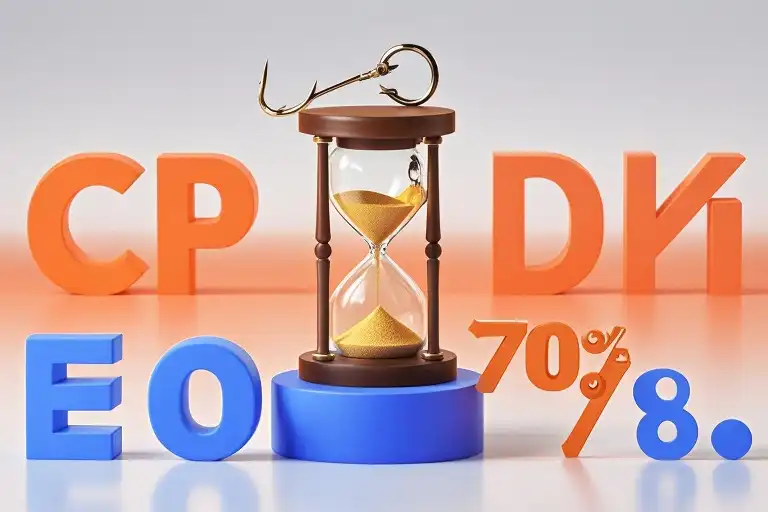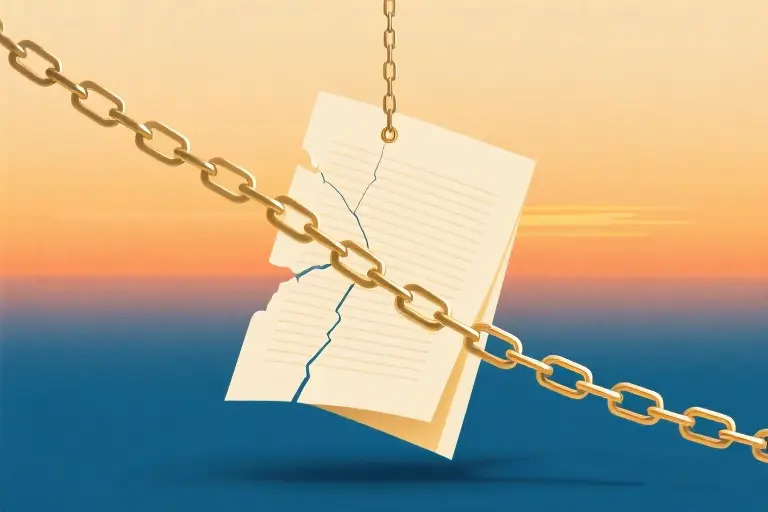There’s a quiet desperation that creeps in when you’re always starting over. You know the feeling – that moment when you hit publish on yet another piece of content, send another email into the void, or launch another product that’ll be forgotten in three months. The coffee keeps flowing, the laptop stays open, but nothing ever seems to accumulate.
I’ve been there too. Sitting with my third cup of the morning, staring at a blank document, wondering why last month’s efforts didn’t lead anywhere. The truth is, we’ve been sold a lie about how digital creation works. The constant churn of new projects isn’t a path to success – it’s just a fancy treadmill.
What changed everything for me was realizing one simple principle: Build once. Sell forever. Not as a catchy slogan, but as a fundamental shift in how I approach every project. It’s the difference between digging random holes hoping to strike gold, and building a mine that keeps producing year after year.
This isn’t about working harder or creating more. It’s about working differently – choosing projects that continue working for you long after the initial effort. The kind of work that compounds rather than expires. The kind that turns your coffee-fueled sessions into actual assets rather than just checked-off tasks.
Most of us start online by accident. We write something, put it out there, and wait to see what happens. When nothing does, we assume we need to create something else. And so the cycle continues – always moving, never building. I spent years stuck in this loop before realizing there was another way.
The breakthrough came when I stopped asking “What should I create next?” and started asking “What can I create that will still be valuable in five years?” That single question changed everything. It filters out fleeting trends and surfaces ideas with real staying power. It transforms your work from disposable to durable.
This approach isn’t sexy. It doesn’t promise overnight results or viral fame. What it does offer is something far more valuable – a way to make your efforts actually add up over time. To stop reinventing the wheel with every new project. To build something that lasts.
Shall we explore what this looks like in practice?
The Hamster Wheel Trap
We’ve all been there. You spend days crafting what feels like the perfect piece of content. The publish button gets clicked with a mix of excitement and anxiety. Then comes the waiting game – refreshing analytics, checking notifications, hoping this one will be ‘the hit.’ When the metrics don’t meet expectations (they rarely do), the cycle resets. New idea, new creation, new gamble.
This pattern extends beyond content creation. Product launches follow the same exhausting rhythm – months of development culminating in a frantic launch week, only to start planning the next offering before the dust settles. The calendar flips, and suddenly you’re back at square one with a ‘New Month, New Offer’ mentality that feels increasingly hollow.
What makes this approach so draining isn’t just the constant production demands. It’s the underlying realization that despite all this effort, we’re not building anything that lasts. Each project exists in isolation, requiring fresh energy for diminishing returns. Like a hamster on its wheel, we’re moving constantly but going nowhere substantial.
Three telltale signs you’re stuck in this cycle:
- Your best-performing content from last year now gathers dust
- You can’t repurpose old work without starting from scratch
- Revenue spikes during launches then flatlines until the next push
The irony? This ‘always be creating’ mentality often stems from good intentions – the desire to stay relevant, to serve audiences, to grow. But when execution lacks strategic foundation, even quality work becomes disposable. We mistake motion for progress, confusing output with impact.
There’s a better way to operate – one where your efforts compound rather than evaporate. Where today’s work becomes tomorrow’s foundation instead of yesterday’s archive. The shift begins by recognizing that sustainable success doesn’t come from running faster on the wheel, but from stepping off it entirely.
What Does “Build Once. Sell Forever” Really Mean?
The phrase sounds simple enough – create something valuable once, then let it generate returns indefinitely. But this mindset shift represents a fundamental departure from how most creators and entrepreneurs operate. At its core, it’s about recognizing the difference between making things and building assets.
Digital assets behave differently than physical ones. A well-constructed online course doesn’t wear out after 100 sales. A thoughtfully designed template doesn’t become obsolete because 50 people used it. This is the leverage principle in action – where your initial creative investment becomes the fulcrum that lifts your ongoing results.
Consider two approaches: spending 100 hours creating 100 disposable social posts versus investing those same hours into building one comprehensive guide. The first might bring temporary spikes of attention; the second becomes a permanent resource that attracts the right audience while you sleep. The math isn’t about working less, but about working differently – applying effort where it compounds rather than evaporates.
This approach mirrors how financial investing works. You wouldn’t deposit money in a bank account that automatically empties every 30 days, yet many creators essentially do this with their content. The “sell forever” mentality transforms your work from perishable goods to enduring property – digital real estate that continues paying rent long after construction.
Three characteristics define true “build once” assets:
- Non-depleting – Usage doesn’t consume the resource (unlike consulting hours)
- Scalable – Can serve 10 or 10,000 users with marginal additional effort
- Autonomous – Functions without your constant direct involvement
The magic happens when you stop thinking in terms of individual transactions and start seeing your work as systems. It’s the difference between painting commissioned portraits and developing a signature art style that attracts collectors. Both require skill, but one approach builds lasting equity while the other trades time for money.
This isn’t about avoiding new work or becoming complacent. The best creators continually refine and expand their assets. But they do so strategically – layering improvements onto existing foundations rather than constantly starting from scratch. That’s how you escape the hamster wheel and start building something that lasts.
The Difference Between Building and Chasing
There’s a quiet desperation in the way most creators operate online. You can see it in the frantic pace – write, publish, pray, repeat. Like a chef who painstakingly prepares a meal only to throw it away after one serving. The old model isn’t just inefficient; it’s fundamentally broken.
The Exhausting Cycle
Traditional content creation follows a predictable pattern:
- Single-use assets: Articles written for immediate traffic spikes
- Manual labor: Each distribution requires fresh effort
- Fragile results: One algorithm change can wipe out months of work
I used to measure my worth by how many new things I could produce each month. The irony? The more I created, the less I actually built. My hard drive filled with orphaned projects – each a standalone effort requiring constant babysitting.
The Leverage Alternative
Now contrast that with the ‘build once’ approach:
- Compoundable work: A single piece repurposed across platforms
- Automated value: Systems that deliver while you sleep
- Anti-fragile assets: Content that gains value over time
Take one substantial article. Through strategic repackaging, it becomes:
- Twitter thread → lead generator
- Email series → audience builder
- eBook chapter → revenue stream
- Course module → premium offering
The same core work now serves multiple functions across your ecosystem. This isn’t content recycling – it’s value multiplication.
The Hidden Shift
What changed wasn’t just my output, but my entire creative lens. Instead of asking “What can I make today?” I now ask:
- Does this have reuse potential?
- Can it function without my direct involvement?
- Will it appreciate rather than depreciate?
This mental shift transforms creators into architects. We stop building sandcastles at high tide and start constructing lighthouses that endure.
The most surprising part? This approach demands less raw output, not more. By focusing on assets rather than artifacts, we escape the hamster wheel of constant creation. The work compounds instead of evaporating.
Your turn: Look at your last three projects. How many were designed for longevity versus immediacy? That ratio reveals whether you’re building wealth or just generating busywork.
Building Assets That Last: A 3-Step Framework
The difference between busywork and legacy-building work often comes down to one simple question: Will this still be valuable six months from now? Most of what we create online has the lifespan of a fruit fly – buzzing with momentary activity before disappearing into the digital void. Here’s how to change that pattern permanently.
Step 1: Choose Vessels That Can Hold More
Not all containers are created equal. A tweet thread evaporates; a well-structured Notion template grows roots. When selecting your creative medium, ask:
- Can this expand naturally? (An ebook outline accommodates new chapters)
- Does it have multiple use cases? (A webinar script becomes course material)
- Will it age gracefully? (Timeless principles outperform trending takes)
I learned this the hard way after publishing 217 standalone LinkedIn posts. Now I write in modular blocks – each piece designed to connect with others like Lego bricks. My current Notion knowledge base has generated more opportunities than those 217 posts combined.
Step 2: Automate the Heavy Lifting
Manual distribution is the silent killer of creative longevity. Zapier isn’t just a tool; it’s your digital apprentice working while you sleep. Here’s my essential automation stack:
- Content Repurposing: New blog posts automatically generate:
- 3 tweet variations (via ChatGPT API)
- LinkedIn carousel draft (Canva template)
- Email newsletter snippet (ConvertKit)
- Lead Nurturing: Website visitors who download guides enter:
- 14-day email sequence (ActiveCampaign)
- Retargeting ads pool (Facebook Pixel)
- Community invite drip (Discord bot)
- Maintenance Alerts: Google Sheets tracks:
- Broken links (Screaming Frog API)
- Outdated statistics (Google Data Studio)
- Emerging questions (Help Scout tags)
The goal isn’t to eliminate human touch, but to reserve your attention for where it matters most – creating and connecting.
Step 3: Listen Closely to What the Numbers Whisper
Every digital asset speaks through data. Most creators hear noise; the smart ones detect patterns. Three metrics I monitor religiously:
- Compounding Content: Which pieces continue attracting traffic/leads months later? (Ahrefs)
- Evergreen Products: What digital products show consistent sales without promotion? (Gumroad analytics)
- Community Signals: Which discussion topics resurface organically? (Discord thread history)
Last quarter, I noticed 38% of my course sales came from three blog posts written in 2021. Instead of creating new content, I simply updated those posts with current examples and saw a 22% conversion lift. That’s the power of listening.
Most “productivity” advice focuses on doing more faster. But true leverage comes from doing less – while ensuring what you do keeps working indefinitely. These three steps aren’t glamorous, but they transform your output from disposable to durable. The coffee will run out. The laptop will age. But assets built this way? They’ll outlast them both.
How They Made It Work
The theory sounds great—build something once and let it generate value indefinitely. But does this approach hold up in the real world? Let me walk you through two concrete examples of creators who escaped the hamster wheel by adopting the ‘Build once. Sell forever’ philosophy.
The Blogger Who Turned Scattered Posts Into a Perennial Seller
Sarah’s story will feel familiar to many content creators. She ran a niche blog about sustainable gardening, publishing 3-4 posts weekly for nearly two years. While some articles gained decent traffic, most disappeared into the internet void after initial promotion. She was constantly creating but never building—until she made one crucial pivot.
Instead of chasing the next viral topic, Sarah:
- Audited her 200+ existing posts to identify evergreen pillars (composting, small-space gardening, pest control)
- Repackaged the best material into a structured 90-page eBook
- Set up automated email sequences that offered the eBook to new subscribers
- Created companion worksheets sold as digital downloads
Eighteen months later, that single eBook generates more monthly revenue than her entire ad-supported blog ever did. The worksheets require zero maintenance beyond annual updates. Her content finally became true digital assets rather than disposable posts.
The Developer Who Productized His Services
Then there’s Mark, a freelance web developer trapped in the hourly billing grind. His breakthrough came when he noticed clients kept requesting similar dashboard features. Instead of coding custom solutions each time, he:
- Built a modular template library for common dashboard components
- Recorded video tutorials explaining implementation
- Launched a self-service portal with tiered pricing
What used to require 20 hours of custom work now sells as a $297 template package. Clients actually prefer the standardized approach, and Mark spends less than 10% of his time on support. The templates have generated over $120,000 in 18 months—all from that initial development sprint.
The Common Thread
Notice what both cases share:
- Leverage existing work: Neither started from scratch. They mined their past efforts for reusable components.
- Designed for scalability: The eBook and templates serve unlimited customers without additional labor.
- Automated delivery: Digital products eliminate the need for one-to-one sales.
- Built feedback loops: Reader questions improved the eBook; client requests expanded the template library.
These aren’t unicorn stories. They’re examples of ordinary creators applying leverage to their skills. The magic lies not in some secret tactic, but in the fundamental shift from creating consumables to building assets.
Your turn: Look at your current projects. Which one has untapped ‘Sell forever’ potential hiding in plain sight? Could that newsletter series become a course? Those client FAQs transform into templates? The raw material is likely already in your hands—it’s just waiting for you to see it as something more permanent.
Your Turn: From Reading to Doing
At this point, you’ve seen the contrast between running endlessly on the hamster wheel and building something that lasts. You’ve got the framework – now what?
Quick Self-Check
Grab a notebook (or open a blank document) and answer these questions honestly:
- When you look at your last three projects, do they connect to each other or exist in isolation?
- Which piece of content or product you’ve created could still be generating value five years from now with minor updates?
- What’s one thing you’re currently doing manually that could be automated with existing tools?
These answers will show you where you’re already practicing “build once, sell forever” thinking – and where you’re still stuck in the launch-and-repeat cycle.
The Real Question
Here’s what I want you to consider today: Which single project in your pipeline has the highest potential to become a long-term asset if you shifted your approach?
Is it that series of LinkedIn posts that could become a webinar? Those client FAQs you keep answering that could transform into a template library? Identify just one candidate for transformation – we’re not trying to boil the ocean here.
What Comes Next
In the follow-up piece, we’ll break down exactly how to take something you’ve already created (like an article or webinar) and systematically repurpose it into multiple income streams. You’ll see real examples of creators who turned single pieces of content into:
- Mini-courses
- Membership site material
- Automated email sequences
- Physical products
But for now, your job is simple: Pick your most promising asset-in-waiting. The rest will follow.
(Leave a comment with what you’re planning to transform – I read every response and often share extra resources based on what people are working on.)





